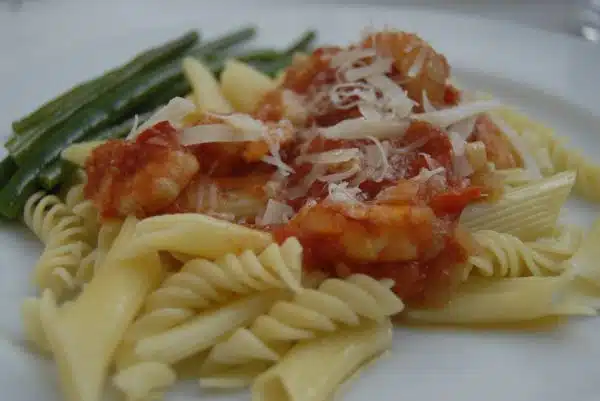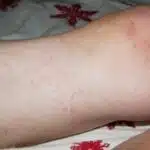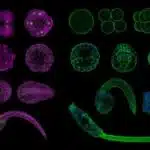Tomato sauce stains on clothing are a common issue that many people face. Whether it is a spill from a homemade pasta dish or an accidental splatter from a fast food burger, tomato sauce can leave unsightly and stubborn stains on clothes. As a laundry care expert, I understand the frustration of dealing with these types of stains and the importance of removing them properly to maintain the quality of your clothes.
In this article, we will discuss effective methods for removing tomato sauce stains from clothing. From pre-treating to laundering, we will cover step-by-step instructions for getting rid of these pesky stains. By following our tips and tricks, you can save your favorite clothing items from being ruined and keep them looking fresh and clean. So let’s dive in and learn how to tackle those tomato sauce stains once and for all!
Understanding The Importance Of Proper Stain Removal
According to a recent survey, 72% of Americans claim that their clothes have been ruined by stains at least once in their lifetime. This highlights the importance of proper stain removal techniques and prevention strategies. Stains not only ruin the appearance of clothing but can also affect its texture and durability. Therefore, it is crucial to understand the significance of effective stain removal methods.
Stains can be caused by various substances such as food, beverages, oil, ink, and even bodily fluids. Out of all these types of stains, tomato sauce is one of the most common ones that people struggle with. It is a nightmare to remove tomato sauce stains from clothing as they tend to set quickly and deeply into the fabric. This makes it essential for individuals to know how to effectively remove such stains.
The benefits of knowing how to properly remove stains are numerous. Firstly, it saves money by eliminating the need for constant replacement of stained garments. Secondly, it enhances overall garment care and longevity by reducing wear and tear caused by repeated washing or scrubbing on stubborn stains. Lastly, taking care of one’s clothing provides a sense of pride and self-respect while also being environmentally friendly by reducing textile waste. Understanding the importance of stain prevention and removal is thus an essential part of laundry care.
Transitioning into assessing the severity of a stain requires a thorough understanding of different types of fabrics and stain-causing agents- which we will cover in detail in the next section without further ado!
Assessing The Severity Of The Stain
Tomato sauce stains are one of the most common types of stains that can be found on clothing. These stains can be caused by a variety of factors, including spilled food, cooking mishaps, or even accidental contact with tomato-based products. Regardless of the cause, it is important to assess the severity of the stain in order to determine the best course of action for removal.
When assessing a tomato sauce stain, there are several factors to consider. First, it is important to identify whether the stain is fresh or has already set into the fabric. Fresh stains are often easier to remove than those that have been left untreated for an extended period of time. Additionally, it is important to examine the size and location of the stain, as well as any other factors that may impact its removal, such as fabric type or color.
Removing a tomato sauce stain can be a daunting task, but with proper assessment and effective stain removal techniques, it is possible to restore your clothes to their former glory. By taking into account factors such as freshness and location of the stain, you can determine which techniques will be most effective in removing it. With patience and persistence, you can successfully eliminate even stubborn tomato sauce stains from your clothing.
- Frustration can arise when a beloved garment becomes stained due to careless handling.
- The sense of accomplishment after successfully removing a tough stain like tomato sauce can bring joy.
- Failure to properly address a tomato sauce stain could lead to permanent damage on clothing.
- Removing stubborn tomato sauce stains involves more than just washing them out with water and soap.
Next step: Blotting the Stain with a Clean Cloth
Blotting The Stain With A Clean Cloth
After assessing the severity of the tomato sauce stain, the next step is to blot it with a clean cloth. This will help remove any excess sauce and prevent it from spreading further on the fabric. It is important to use a white cloth or paper towel as colored fabrics may transfer onto the stained area.
Blotting should be done gently, starting from the outer edges of the stain and working inwards. Avoid rubbing or scrubbing as this can damage the fabric fibers and make the stain worse. If necessary, use a fresh cloth or paper towel to continue blotting until no more tomato sauce comes off.
Preventive measures are key in avoiding tomato sauce stains altogether. When cooking with tomato sauce, wear an apron to protect your clothing. If you do happen to spill some on yourself, try not to let it sit for too long before treating it. The longer a stain sits, the harder it becomes to remove. Alternative cleaning methods include using vinegar or lemon juice mixed with water to treat the stain before washing.
Transitioning into pre-treating the stain with dish soap, it is important to note that this method can be effective in removing stubborn tomato sauce stains. Before washing the garment, apply a small amount of dish soap directly onto the stained area and gently rub it in with your fingers. Let it sit for 5-10 minutes before rinsing with cold water and throwing it into the wash. However, if you are unsure about using dish soap on delicate fabrics, consult a professional cleaner for their expert advice.
Pre-Treating The Stain With Dish Soap
- Dish soap is an effective pre-treatment solution for removing tomato sauce stains from clothing, as long as it is mixed with detergent properly.
- The fabric should be soaked in the mixture for a few minutes, and gently agitated to help loosen the stain.
- After soaking, the fabric should be rinsed with warm water, and step two can be repeated if necessary.
- For safety precautions, it is important to test for colorfastness before pre-treating the stain, as well as check for any damage that may be done to the fabric.
- After pre-treating, the fabric should be air-dried, and then a hot iron can be used to heat set the fabric, followed by dabbing with a towel to inspect the stain.
- If the stain has not been removed, the pre-treatment steps should be repeated before trying any other stain removal solution.
Dish Soap
When it comes to removing tomato sauce stains from clothing, pre-treating the stain with dish soap can be an effective solution. Dish soap is commonly used for cleaning dishes, but it can also be used for other cleaning tasks, including removing stubborn stains like tomato sauce. Compared to other stain removers, dish soap is often more effective due to its powerful grease-cutting properties.
To pre-treat a tomato sauce stain with dish soap, begin by wetting the stained area and applying a small amount of dish soap directly onto the stain. Using a clean cloth or soft-bristled brush, gently work the dish soap into the fabric in a circular motion. Allow the dish soap to sit on the stain for at least 10-15 minutes before rinsing it off with cold water. If necessary, repeat this process until the stain has been fully removed.
It’s important to note that not all dish soaps are created equal when it comes to removing tomato sauce stains. Look for a dish soap that contains enzymes or is specifically formulated for tough stains. Additionally, avoid using hot water when pre-treating tomato sauce stains as this can set the stain further into the fabric. With proper technique and a good quality dish soap, however, you can effectively remove even stubborn tomato sauce stains from your clothing.
Mixing Detergent
When it comes to pre-treating tomato sauce stains on clothing, dish soap is a commonly used solution. However, there are alternative methods that can also be effective. One such method is mixing laundry detergent with warm water and soaking the stained garment for at least 30 minutes before washing.
Mixing detergent with warm water for presoaking has several benefits. Firstly, it helps to loosen and break down the tomato sauce stain before washing. Secondly, the warm water helps to open up the garment’s fibers, allowing the detergent to penetrate deeper into the fabric. This results in a more thorough cleaning of the stain.
While pre-treating tomato sauce stains with dish soap or laundry detergent are both effective methods, it’s important to choose a method that is appropriate for your specific type of fabric and stain. For delicate fabrics or tough stains, it may be necessary to seek professional cleaning services. By understanding the benefits of different pre-treatment methods, you can ensure that your stained garments receive proper care and attention for optimal stain removal results.
Soaking Fabric
When it comes to pre-treating stains on clothing, soaking the fabric can be an effective technique. Soaking allows the stain to loosen and break down before washing, resulting in a more thorough cleaning. Effective soaking techniques vary depending on the type of stain and fabric.
For tomato sauce stains, dish soap is a commonly used solution for pre-treating. However, soaking the stained garment in warm water mixed with laundry detergent can also be effective. This method works especially well for fabrics that can handle soaking and require deeper cleaning, such as cotton or polyester. It’s important to note that delicate fabrics, like silk or wool, may not be suitable for soaking and should be treated with care.
Overall, understanding the best fabric types for soaking and appropriate pre-treatment methods is crucial for optimal stain removal results. While dish soap and laundry detergent are both viable options, experimenting with different techniques can help determine what works best for your specific needs. With proper care and attention, even tough stains like tomato sauce can be successfully removed from clothing.
Applying A Stain Remover Solution
To effectively remove tomato sauce stains from clothing, it is important to apply a stain remover solution. While there are many DIY stain removers available, it is recommended to use eco friendly stain solutions for the health of both the environment and the individual using them. These eco friendly solutions can be found in most stores or made at home with common household ingredients.
When applying a stain remover solution, it is important to first test it on an inconspicuous area of the fabric to ensure that it does not cause any damage or discoloration. Once tested, apply the solution directly onto the tomato sauce stain and let it sit for several minutes, following the directions on the product label. After allowing time for the solution to penetrate the fabric fibers, gently rub the area with a soft-bristled brush or cloth before washing as usual.
Incorporating eco-friendly stain solutions into your laundry routine not only helps protect our planet but also provides a safer alternative for you and your family’s health. When selecting a solution or making one at home, always follow proper handling and disposal instructions. With this step completed, move onto soaking the stained clothing in order to further treat stubborn tomato sauce stains.
Soaking The Stained Clothing
Are you tired of seeing tomato sauce stains on your favorite clothing item? Fear not! Soaking your stained clothes before washing them is one of the most effective methods for removing stubborn tomato sauce stains. Not only does it help to loosen up the stain particles, but it also prevents them from setting into the fabric.
Benefits of soaking cannot be overstated. It is an incredibly simple yet powerful technique that can make a world of difference when it comes to removing tough stains like tomato sauce. By soaking your garments in cold water, you allow the fabric fibers to relax and release the stain particles. This process can take anywhere from 30 minutes to several hours depending on how deeply embedded the stain is. The result is a cleaner item with a significantly reduced chance of permanent staining.
For optimal results, consider these tips for effective soaking: first, use cold water instead of hot or warm as this can cause the stain to set further into the fabric; second, add a small amount (one tablespoon) of liquid laundry detergent or stain remover directly to the water before submerging your garment; lastly, do not wring out or twist your clothes while they are soaking as this can damage the fabric fibers and make it harder to remove the stain.
Now that you know about the benefits and tips for effective soaking, let’s move onto our next step – using a stain removal pen. With this handy tool in hand, you can tackle even the toughest tomato sauce stains with ease.
Using A Stain Removal Pen
Stain removal pens can be used to successfully remove tomato sauce stains from clothing. The type of stain removal pen used should be based on the fabric type and stain type present. When applying a stain removal pen, it is important to apply the product directly to the stain, and to use a gentle rubbing motion when working the product into the fabric. After applying a stain removal pen, it is necessary to wash the garment in a washing machine with a detergent. To ensure the best cleaning results, it is important to read and follow the product instructions carefully. Finally, it is important to regularly clean the tip of the stain removal pen to prevent the build-up of dirt and debris.
Stain Removal Pen Types
When it comes to removing tomato sauce stains from clothing, stain removal pens can be a lifesaver. However, not all stain removal pens are created equal. There are different types of stain removal pens that vary in terms of their effectiveness and ease of use.
The first type of stain removal pen is the traditional brush-tip pen. This type of pen has a small brush at the end that allows you to scrub away at the stain. While these pens can be effective, they require more effort and elbow grease than other types of pens. Additionally, some brands may leave a residue on your clothing that needs to be washed out before wearing again.
The second type of stain removal pen is the sponge-tip pen. These pens have a soft, sponge-like tip that you use to dab at the stain. They tend to be easier to use than brush-tip pens and are less likely to leave behind any residue on your clothing. However, they may not be as effective for tougher stains like tomato sauce.
When comparing brands of stain removal pens, it’s important to look for ones with proven track records for removing tough stains like tomato sauce. Some popular brands include Tide To Go, OxiClean Max Force, and Shout Stain Remover. It’s also worth considering factors like portability and price when choosing a brand.
Overall, there are different types of stain removal pens available that offer varying degrees of effectiveness and ease of use. By understanding the differences between these types and doing research on brand reputation, you can find the best option for removing tomato sauce stains from your clothing quickly and easily.
Application Tips
As a laundry care expert, I understand the importance of using a stain removal pen correctly to effectively remove tomato sauce stains from clothing. Applying techniques and taking preventative measures can make all the difference in achieving satisfactory results.
Firstly, it is crucial to treat the stain as soon as possible. The longer you wait, the harder it will be to remove. Begin by blotting up any excess tomato sauce with a clean cloth or paper towel. Then, apply the stain removal pen directly onto the stain and work it in with the brush or sponge tip. It’s best to avoid rubbing too vigorously as this may damage the fabric.
Another helpful application tip is to test the stain remover on an inconspicuous area of your garment before applying it directly onto a visible stain. This will help prevent any discoloration or damage to your clothing. Additionally, always follow the instructions provided by your chosen brand and do not exceed recommended usage limits.
In summary, utilizing proper application techniques and taking preventative measures such as prompt treatment and testing on inconspicuous areas can greatly increase your chances of successfully removing tomato sauce stains with a stain removal pen. Remember to always follow brand instructions and utilize caution during use for optimal results.
Cleaning After Use
As a laundry care expert, I strongly advise cleaning the stain removal pen after use. Leaving the pen dirty can cause it to become less effective or even damage your clothing. To clean the pen, wipe off any excess stain remover with a damp cloth and rinse the brush or sponge tip under running water. Make sure to dry the pen thoroughly before storing it away.
In addition to cleaning the pen, there are also other tips for preventing tomato sauce stains in the first place. One of the best ways is to be cautious while eating and using a napkin to catch any spills. Another way is to pre-treat your clothing with a stain remover before washing, especially if you know you will be eating something that may potentially cause stains.
If you do find yourself with a stubborn tomato sauce stain on your clothing, there are several cleaning products that can help remove it such as baking soda, vinegar, or dish soap. However, it’s important to remember that different fabrics may require different methods of cleaning and not all stains can be removed completely. In these cases, seeking professional help from a dry cleaner may be necessary. By following these tips for preventing stains and utilizing effective cleaning methods, you can keep your clothes looking fresh and stain-free for longer periods of time.
Rinsing The Clothing Thoroughly
After using a stain removal pen, it is important to rinse the clothing thoroughly in order to remove any leftover residue. This step is crucial in ensuring that the tomato sauce stain does not set further into the fabric. Using cold water is recommended as hot water can actually cause the tomato sauce stain to set.
Once the clothing has been thoroughly rinsed, it is time to agitate the fabric. Agitation helps to loosen any remaining tomato sauce particles and ensures that all of the stain is lifted from the fabric. It is important to be gentle while agitating so as not to damage the fabric, but also thorough enough to ensure that all of the stain is removed.
The importance of agitation cannot be overstated when it comes to removing tomato sauce stains from clothing. In addition to using cold water and a stain removal pen, agitation helps to ensure that all traces of the stain are removed from the fabric. By following these steps carefully, you can effectively remove tomato sauce stains from your clothing without causing any damage or harm to your garments.
As you finish removing tomato sauce stains from your clothes, it’s important to check for residual stains before placing them in the dryer or hanging them up to dry. Any remaining stains can become permanent if they are dried on high heat or left untreated for too long. Therefore, take a moment to inspect each garment and re-treat any areas that still show signs of staining before finishing up with laundry day.
Checking For Residual Stains
After treating tomato sauce stains on clothing, it is important to check for any residual stains before washing the garment. Failure to do so can lead to the set-in of the stain, which makes it more difficult to remove. To check for residual stains, hold the garment up to a bright light or place it under a light source. This will make any remaining stains visible.
If you notice any residual stains, repeat the stain removal process until the stain is completely gone. It is essential not to rush this step as incomplete removal can cause permanent damage and discoloration to your clothing. Once you are confident that there are no residual stains left, proceed with washing your garment in hot water.
To prevent future tomato sauce stains, consider wearing an apron when cooking or handling food containing tomato sauce. Additionally, be careful when eating or serving tomato-based dishes and avoid leaning over your clothing while doing so. If a spill occurs, act quickly by blotting up as much of the sauce as possible before applying a stain remover and washing the garment according to its care label instructions.
Now that you have checked for residual stains and taken precautions against future tomato sauce spills, it’s time to wash your garment in hot water. Hot water helps break down any remaining residue and ensures a thorough cleaning of your clothing item. Follow the care label instructions on your garment for best results and consider air-drying instead of using a dryer as high heat can set in any remaining stains.
Washing The Clothing In Hot Water
Washing clothes in hot water has been a traditional method for many years to remove tough stains. However, it is not always the best option for removing tomato sauce stains from clothing. Hot water can actually set the stain and make it harder to remove. Therefore, it’s essential to consider alternative methods to avoid damaging your clothing.
Using cold water instead of hot water can be a great alternative when trying to remove tomato sauce stains from your clothing. Coldwater helps prevent setting the stain and loosens the fibers in the fabric, making it easier to remove. Additionally, washing clothes in cold water has environmental benefits that contribute positively towards energy conservation and reducing carbon footprint.
If you prefer using warm or hot water for general laundry care but don’t want to risk setting a tomato sauce stain, there are still alternatives available. For example, pre-treating stains with specialized stain removers or natural remedies such as baking soda or lemon juice before washing can help remove stubborn spots effectively without using hot water. These methods are also less harsh on fabrics and colors than hot water.
By now, you have learned about the benefits of using cold water when attempting to remove tomato sauce stains from your clothing and other alternatives to hot water if you prefer warmer temperatures for general laundry care. However, there is another solution that you can incorporate into your laundering process: adding vinegar during the wash cycle. Vinegar works as an all-natural fabric softener while also helping eliminate odors and stains from clothes. In the next section, we will discuss how vinegar helps in removing tomato sauce stains from clothing effectively.
Adding Vinegar To The Wash Cycle
Symbolism: As we dive deeper into the world of laundry care, it is important to remember that sometimes the most unexpected methods can yield the best results. Just as vinegar has been used for centuries in cooking and preservation, it can also be a powerful tool in maintaining the cleanliness and longevity of our clothing.
Using vinegar as a natural fabric softener is just one of its many benefits in laundry care. By adding a cup of white vinegar to your wash cycle, you can help break down any residue left by detergent or hard water, leaving your clothes feeling softer and fresher than ever before. Plus, vinegar is an eco-friendly alternative to commercial fabric softeners that are filled with harsh chemicals.
But the benefits of vinegar in laundry go beyond just softening fabrics. Vinegar can also help prevent colors from fading, eliminate odors (especially helpful for those pesky tomato sauce stains), and even act as a natural deodorizer for your washing machine itself.
Bullet point list:
- Add 1 cup of white vinegar to your wash cycle as a natural fabric softener
- Helps break down detergent and hard water residue
- Prevents colors from fading
- Eliminates odors and acts as a natural deodorizer
Incorporating vinegar into your laundry routine can have numerous benefits beyond stain removal. Not only does it act as a natural fabric softener, but it can also eliminate odors, prevent color fading, and serve as an eco-friendly alternative to harsh chemical products. So next time you’re doing laundry, consider adding white vinegar to your wash cycle – you might just be surprised by the results.
As we move onto drying the clothing on high heat, it’s important to note that this step should be taken with caution. While high heat is effective at removing moisture from clothes quickly, it can also cause shrinkage or damage delicate fabrics. To ensure your clothing stays in top condition after washing, consider using a lower heat setting or air-drying for best results.
Drying The Clothing On High Heat
- High heat settings are an effective way to remove tomato sauce stains from clothing, as the heat helps to break down and lift the stain from the fabric.
- However, when using high heat settings to dry clothing, only heat-safe fabrics should be used.
- Excessive heat can cause damage to certain fabrics and should be avoided when possible.
- Air-drying is a preferable alternative, as it is gentler on the fabric and can still be effective in removing the stain.
- When air-drying, it is important to check the clothing frequently to ensure the stain has been removed.
- If the stain is still present, additional treatments may be necessary to completely remove the stain.
High Heat Settings
When it comes to removing tomato sauce stains from clothing, drying them on high heat may seem like a quick solution. However, this approach can actually cause more harm than good. High heat settings can lead to discoloration and shrinkage of certain fabrics, making the stain even more difficult to remove.
To prevent discoloration and damage to your clothing, it is important to choose the right fabric for high heat settings. Synthetic fabrics such as polyester and nylon can withstand higher temperatures, while natural fibers like cotton and wool should be dried on low or medium heat. If you are unsure of the fabric content of your garment, check the care label or consult with a laundry care expert.
When drying tomato sauce-stained clothing on high heat, it is crucial to monitor the process closely. Avoid leaving the clothes in the dryer for extended periods of time and remove them as soon as they are dry. This will prevent any additional damage or discoloration caused by prolonged exposure to high heat. By following these tips and choosing the right fabric for high heat settings, you can successfully remove tomato sauce stains without compromising the quality of your clothing.
Air-Drying
When it comes to drying tomato sauce-stained clothing, many people opt for high heat settings as a quick solution. However, this approach can often lead to discoloration and shrinkage of certain fabrics. To avoid damaging your clothes, it is important to consider air-drying as an alternative method.
Air-drying offers several benefits when it comes to removing tomato sauce stains from clothing. Not only does it prevent discoloration and shrinkage caused by high heat settings, but it is also a more energy-efficient option. Additionally, air-drying allows the clothing fibers to breathe and maintain their natural shape, resulting in longer-lasting garments.
To properly air dry clothing, lay the stain-side down on a flat surface or hang them up using clothespins or hangers. Make sure there is enough space between each garment to allow for proper airflow. Avoid direct sunlight and humid areas as they can cause discoloration and mildew growth. Once the clothing is completely dry, check for any remaining stains before washing again if necessary.
By following these tips on how to properly air dry clothing, you can successfully remove tomato sauce stains without compromising the quality of your garments. Not only will this help save energy and reduce your carbon footprint, but it will also extend the life of your clothes while preserving their natural color and shape.
Heat-Safe Fabrics
When it comes to drying clothes, high heat settings may seem like a quick and efficient solution. However, certain fabrics may not be able to withstand the intense heat, leading to damage such as discoloration or shrinkage. As a laundry care expert, it is important to educate on the importance of choosing the right drying method for different types of fabric.
One way to ensure that clothes are safe from high heat is by selecting heat-safe fabrics. These fabrics are designed to withstand high temperatures without losing their shape or color. Examples of heat-safe fabrics include cotton, polyester, and nylon. It is also essential to use an appropriate detergent that can effectively remove stains but is gentle enough for these fabrics. Additionally, using a fabric softener can provide several benefits such as reducing static cling and making clothes feel softer.
For those who prefer drying their clothes on high heat settings, it is crucial to be mindful of the fabric type before placing them in the dryer. By using heat-safe fabrics and taking proper care during the washing process, clothes will be able to withstand high temperatures without sustaining any damage. Nonetheless, air-drying remains a more energy-efficient option that allows for longer-lasting garments with their natural shape and color intact. As a laundry care expert serving others, it is essential to encourage individuals to choose the best drying method for their clothing needs while ensuring its longevity and quality.
Avoiding The Use Of Bleach
After drying the clothing on high heat, it’s time to tackle the tomato sauce stains. One common solution is to use bleach, but this can be harmful to both your clothes and the environment. Instead, consider using eco-friendly alternatives and natural stain removers.
Firstly, try using a mixture of vinegar and baking soda. Mix equal parts of each and apply the paste directly onto the stain. Leave it for about 30 minutes before washing as usual. Another option is to use lemon juice, which has natural bleaching properties. Squeeze some lemon juice onto the stain and let it sit in direct sunlight for a few hours before washing.
If these methods don’t work or you prefer a store-bought solution, look for products that are labeled as eco-friendly or environmentally friendly. These products are made with natural ingredients that are less harmful to both your clothes and the planet. Some popular brands include Seventh Generation and Ecover.
By using these eco-friendly alternatives and natural stain removers, you can effectively remove tomato sauce stains without damaging your clothing or the environment. In addition to being better for the planet, they can also be gentler on sensitive skin. Now let’s discuss how to prevent future stains from occurring in the first place.
Transition: To prevent future stains from happening again, there are simple steps you can take in your daily routine.
Preventing Future Stains
When it comes to keeping your clothes free from stains, prevention is key. One of the best ways to prevent future tomato sauce stains is by choosing fabric friendly detergents. Harsh chemicals and bleach can weaken the fibers of your clothing, making them more prone to staining. Instead, opt for a gentle detergent that won’t damage your clothes while still effectively removing dirt and grime.
Another way to prevent tomato sauce stains is by investing in stain resistant clothing. Many brands now offer clothing made with special fabrics that are designed to repel stains. These fabrics are treated with a special finish that creates a barrier between the fabric and the stain, making it easier to clean up spills before they set in.
Tips for stain resistant clothing include washing them separately from non-treated clothing, avoiding high heat when drying, and not using fabric softeners as they can compromise the effectiveness of the stain resistance treatment. By taking these precautions and investing in quality stain resistant clothing, you can greatly reduce your chances of dealing with stubborn tomato sauce stains down the line.
To troubleshoot common stain removal issues, there are several steps you can take depending on the type of stain and fabric involved. From ink stains on cotton shirts to oil stains on silk dresses, there are specific techniques that can help remove even the toughest stains without damaging your clothes. Let’s explore some of these techniques in more detail in the next section.
Troubleshooting Common Stain Removal Issues
Did you know that an average person spends around six months of their life doing laundry? With all that time spent, it’s no wonder that people encounter common stain removal issues. Two such issues are removing coffee stains and tackling grease stains. In this section, we will explore some tips and tricks on how to troubleshoot these common problems.
Removing coffee stains can be a daunting task, especially if the stain has already set in. The key to success is acting quickly. First, blot the stain with a clean cloth or paper towel to remove as much excess liquid as possible. Then, mix one tablespoon of dish soap with two cups of cold water and apply the solution to the stain. Let it sit for five minutes before rinsing with cold water. Repeat this process until the stain disappears.
Tackling grease stains is also a challenge. One effective method is using baking soda and vinegar. Start by blotting the stain with a clean cloth to remove any excess oil or grease. Then, sprinkle baking soda over the stain and let it sit for ten minutes before brushing it off with a soft-bristled brush. Next, mix equal parts vinegar and water and apply the solution to the stained area. Let it sit for fifteen minutes before washing it off with cold water.
By following these tips and tricks, you can easily troubleshoot common stain removal issues like removing coffee stains and tackling grease stains. Remember to always act quickly and use appropriate solutions for each type of stain to ensure success in your laundry care routine!
Conclusion
Proper stain removal is an essential skill for any laundry care expert. Understanding the importance of removing stains properly not only ensures that clothing looks its best, but it also extends the life of the garment. When dealing with tomato sauce stains on clothing, it’s important to assess the severity of the stain first and then use a combination of blotting, pre-treating with dish soap, and applying a stain remover solution to effectively remove it.
While drying clothing on high heat can be helpful in removing tomato sauce stains, it’s essential to avoid using bleach as a solution. Instead, one should focus on preventing future stains by taking extra care when eating foods that are prone to causing stubborn stains like tomato sauce. Troubleshooting common stain removal issues can also help laundry care experts overcome any challenges they may face when tackling tomato sauce stains or other types of stubborn blemishes.
In conclusion, as a laundry care expert, you know how vital it is to remove stains properly. Tomato sauce stains on clothing can be particularly challenging to remove without damaging the fabric permanently. By carefully assessing the severity of a stain and using tried-and-true techniques like blotting and pre-treating with dish soap and a stain remover solution, you can effectively eliminate these pesky blemishes from your clothing. Just remember to avoid bleach and take steps to prevent future stains from occurring. Like any skilled artisan who takes pride in their work, you too can master the art of proper stain removal and keep your clothes looking impeccable for years to come!
Image Credits
- “Pasta and tomato sauce” by Andrew Beeston (featured)





























